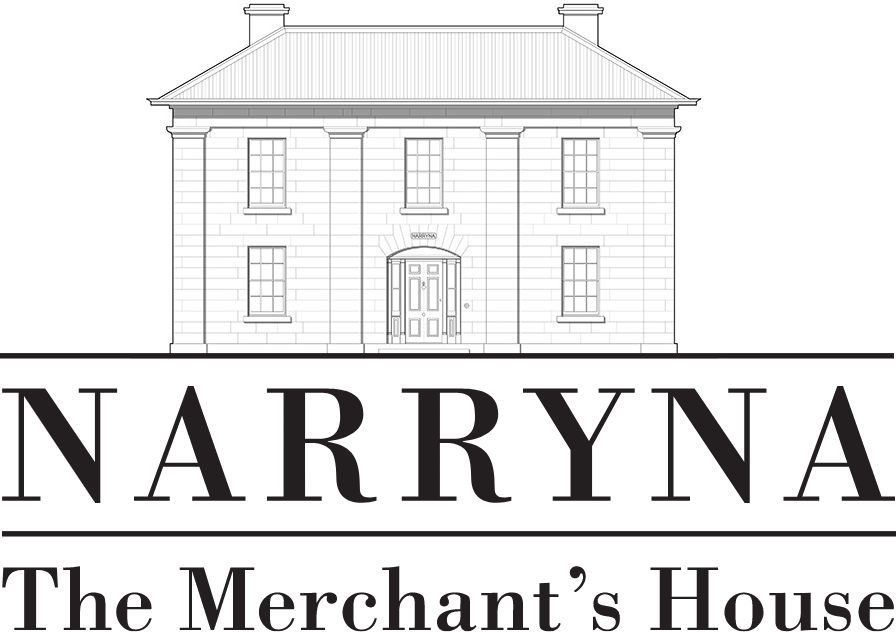NarrynA
Our Collections
Scrimshaw
Whaling in Tasmanian waters was one of Australia’s leading export industries before the advent of petrochemicals in the 1860s. Whaling is inextricably linked with Hobart’s origins. In 1803, the Albion captained by Ebenezer Bunker to take Captain Bowen and his party to Risdon Cove paused to capture and render down three sperm whales at Great Oyster Cove. The Southern Right Whale was the quarry of Tasmanian whalers until the mid 1830s when numbers decreased. The era of deep sea whaling in pursuit of the Sperm Whale then began. Hobart’s wealthier citizens (including Captain Andrew Haig of Narryna) took an interest in whaling.
Scrimshaw is decorated Sperm Whale teeth or bone from the Sperm Whale’s lower jaw. Baleen was obtained from the feeding plates of the Southern Right Whale. In the days of deep sea whaling, sailors were at sea for months and even years at a time. To relieve boredom crews made and decorated scrimshaw objects using tools that were to hand. A design was drawn or traced onto the surface and scratched in with a knife or needle; then colour, India ink, paint or even soot was wiped into the scratches, usually with the thumb. The decorated items were often presented as gifts for wives and sweethearts.
dressing table set c.1858
Dressing table or desk set with pan bone (section of sperm whale jawbone) plaque engraved with a ‘fashion plate’ scene of three women in broad crinolines, bonnets and shawls. The crown surmounting the scene hints at the image being taken from a fashionable journal illustration of British or European royalty.
Trypot c1840
Cast iron, British maker unknown
This large caudron belongs to the age of deep sea whaling in pursuit of the sperm whale (Physeter macrocephalus). Before the advent of the petrochemicals industries around 1860, whale oil was used to lubricate machinery, provide the fuel for domestic and street lighting and was the basis for perfumes, soap and some margarines. Whale flesh was boiled (or rendered) in caudrons like this which were positioned above fires on lead trays on the ship’s deck. The resulting liquid whale oil was then decanted into casks. A fire escaping from the furnace was fatal to operations. Caudrons often found their way to rural properties where they were used to render down sheep at times of drought and agricultural depression.
Pilot whale jaw bone c. 1860
Engraved with an image of a semi-draped nude perhaps Susannah from the Apocryphal story of Susannah and the Elders.
Corset busk c. 1830
Perforated with a star at the top and engraved with naïve images of a heart, two love birds, a sailor and mounted soldier and a woman. The back is engraved with domestic farm scenes.
Presented by Miss Violet Mace whose great grandfather, George Meredith (1778-1856) of Cambria, Swansea, Tasmania, was a whaler


